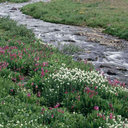A rare case of multiple myeloma initially presenting with pseudoachalasia.
Parole chiave
Astratto
Pseudoachalasia is a rare clinical entity with clinical, radiographic, and manometric features often indistinguishable from achalasia. Primary adenocarcinomas arising at the gastroesophageal junction or a tumor of the distal esophagus are the most frequent causes of pseudoachalasia. Rarely, processes other than esophagogastric cancers including chronic idiopathic intestinal pseudo-obstruction, amyloidosis, sarcoidosis, Chagas' disease, vagotomy, antireflux surgery, pancreatic pseudocysts, von Recklinghausen's neuroinomatosis, gastrointestinal stromal tumor, and other malignancies and rare genetic syndromes, may lead to the development of pseudoachalasia. Secondary achalasia is extremely rare, with less than 100 cases reported in the literature so far. Gastrointestinal manifestations in primary or secondary amyloidosis include abdominal pain, diarrhea, constipation, malabsorption, obstruction, motility disturbance, intestinal infarction, perforation, and hemorrhage; however, gastrointestinal tract involvement is asymptomatic in most instances. We present here a rare case of multiple myeloma initially presenting with dysphagia because of esophageal amyloidosis and manometric findings typical of achalasia.


